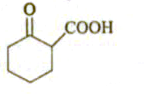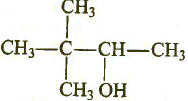During aerobic respiration which of the following conversion undergo both dehydrogenation and decarboxylation
PGAL to BPGAL
Succintly CoA to Succinic acid
Pyruvic acid to Acetyl CoA
Malic acid to Oxaloacetic acid
Step-by-Step Solution:
1. Understanding the Question: The question asks which conversion during aerobic respiration involves both dehydrogenation and decarboxylation.
2. Identifying the Steps of Aerobic Respiration: Aerobic respiration consists of three main stages:
- Glycolysis
- Link Reaction (also known as Pyruvate Oxidation)
- Krebs Cycle (Citric Acid Cycle)
3. Analyzing the Given Options: The options provided need to be evaluated to see which one involves both dehydrogenation and decarboxylation.
4. Option Analysis:
- First Option: Phosphoglyceraldehyde to biphosphoglyceraldehyde. This is a phosphorylation reaction and does not involve dehydrogenation or decarboxylation.
- Second Option: Succinyl CoA to succinic acid. This reaction occurs in the Krebs cycle and is a dephosphorylation, not involving dehydrogenation or decarboxylation.
- Third Option: Pyruvic acid to acetyl CoA. This conversion occurs during the link reaction and is catalyzed by the pyruvate dehydrogenase complex. In this reaction, pyruvic acid (3 carbons) is converted into acetyl CoA (2 carbons) with the release of one molecule of CO2 (decarboxylation) and the reduction of NAD+ to NADH (dehydrogenation). Thus, this option involves both processes.
- Fourth Option: Malic acid to oxaloacetic acid. This reaction occurs in the Krebs cycle and involves only dehydrogenation, not decarboxylation.
5. Conclusion: The only conversion that involves both dehydrogenation and decarboxylation is the conversion of pyruvic acid to acetyl CoA. Therefore, the correct answer is the third option.
Final Answer: Pyruvic acid is converted into acetyl coenzyme A (third option).
---
- Glycolysis
- Link Reaction (also known as Pyruvate Oxidation)
- Krebs Cycle (Citric Acid Cycle)
- First Option: Phosphoglyceraldehyde to biphosphoglyceraldehyde. This is a phosphorylation reaction and does not involve dehydrogenation or decarboxylation.
- Second Option: Succinyl CoA to succinic acid. This reaction occurs in the Krebs cycle and is a dephosphorylation, not involving dehydrogenation or decarboxylation.
- Third Option: Pyruvic acid to acetyl CoA. This conversion occurs during the link reaction and is catalyzed by the pyruvate dehydrogenase complex. In this reaction, pyruvic acid (3 carbons) is converted into acetyl CoA (2 carbons) with the release of one molecule of CO2 (decarboxylation) and the reduction of NAD+ to NADH (dehydrogenation). Thus, this option involves both processes.
- Fourth Option: Malic acid to oxaloacetic acid. This reaction occurs in the Krebs cycle and involves only dehydrogenation, not decarboxylation.
Topper's Solved these Questions
Similar Questions
Knowledge Check
Which of the following compounds will undergo decarboxylation on heating?
A B
B C
C D
D
Which of the following compounds cannot undergo decarboxylation on heating?
A B
B C
C D
D
Which of the following alcohols undergo rearrangement during dehydration reaction ?
A B
B C
C D
D
During aerobic respiration, acetyl CoA is synthesised in
View SolutionDuring aerobic respiration, one molecule of glucose produces:
View SolutionWhich of the follolwing compounds undergoes easy decarboxylation on heating ?
View SolutionWhich of the following gland will undergo atrophy during puberty ?
View SolutionWhich of the following reactions does not involve decarboxylation?
View Solution
